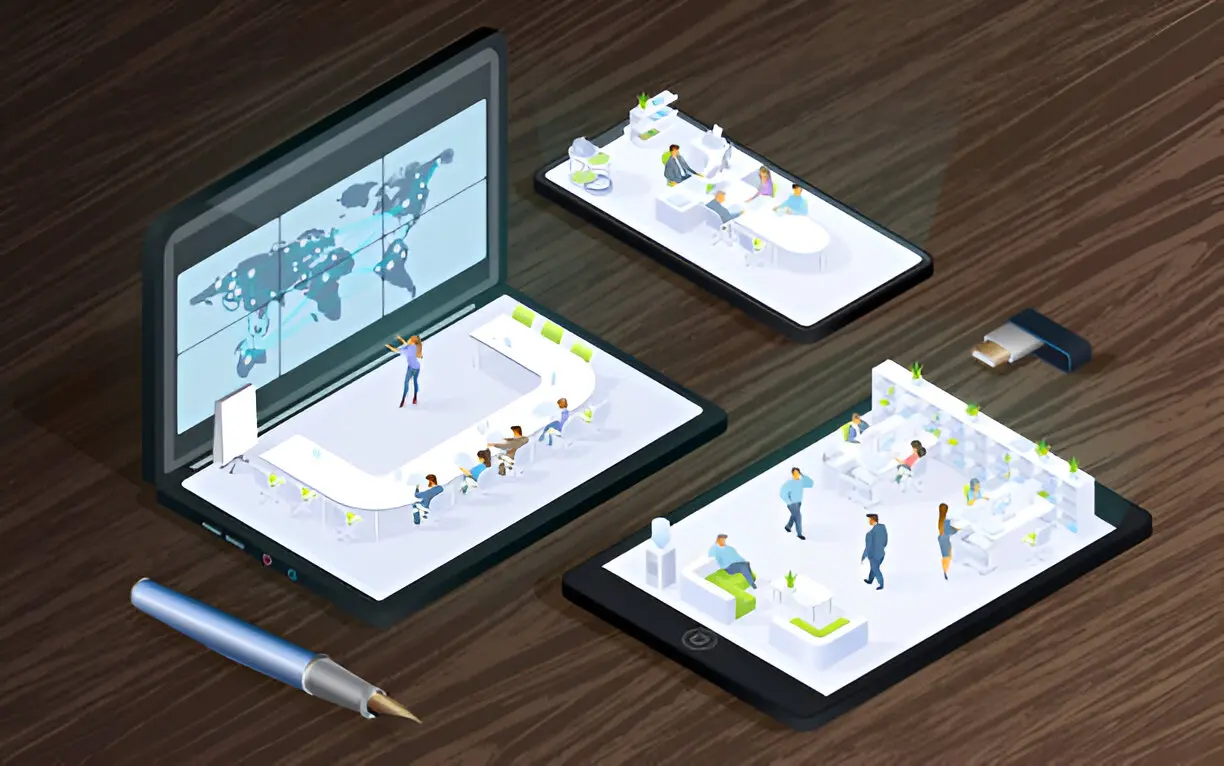The COVID-19 pandemic has had a profound impact on our lives. From the perspectives of life to the way we live, it has changed everything. And one of the biggest changes is remote working. Though the pandemic is over, its impact on the corporate world doesn’t seem to be ending.
While some employees have resumed working in the office, some are still working remotely. This is making the companies rethink how to design workspaces that could cater to both remote and on-site employees. To counter this issue, office interior designers are emerging with powerful solutions. Here we will try to decode how organisations can design offices that can accommodate a hybrid model.
The Hybrid Work Model
Since the pandemic, the hybrid office model has taken over, especially in corporate environments. According to a report, 60% of employees work in a hybrid setup. This has made it clear that a “one size fits all” office layout cannot be effective anymore. Thus, organisations have to shift to better and modern alternatives.
A hybrid office design is no longer about shrieking office footprints. It is more about designing a dynamic space that nurtures innovation and connections, considering the diverse work needs. The office layout must offer experiences such as interior office design spontaneous collaboration, access to specialised tools, and social interactions.
Key Principles of the Hybrid Work Model
Creating a workspace supporting hybrid teams must be built on a foundation of flexibility, inclusivity and technology. Here are a few key principles on which an organisation can foster their hybrid teams.
Flexibility
Flexibility is one of the important aspects of the hybrid work mode. As hybrid work means different employees will be there on different days. Designing a layout that can be flexibly scaled up or down according to the occupancy is crucial.
Tech-Enhanced Collaboration
Technology is the backbone of a hybrid environment. However, it is also one of the biggest challenges to maintain equitable communication between remote and in-house employees. Thus, to bridge this gap, features like meeting rooms with 360-degree cameras, crystal clear audio, and a “get-on-board” room booking system must be implemented.
Focused Zone
The reasons why hybrid employees come to the office – collaboration, access to tools, or a change of environment for focused work. Organisations can segment the offices into zones based on work style. For instance, a focused zone for deep work and collaborative zones for collaborative work and meetings.
Holistic Design
Remote employees can feel left out of office interactions. So, the smart layout must ensure to mitigate this by designing for inclusion. These designs must provide equal access to the resources and opportunities regardless of location. A hybrid layout must encourage informal interactions and virtual spaces to maintain team harmony.
Data-Driven Designs
Smart layouts rely on real-time data for the usage guide. Tools like sensors, analytic tools, and feedback loops can help organisations to optimise the space continuously. Through desk occupancy rates, popular meeting rooms, peak collaborative time and zone, companies can iterate their layouts. They can make informed decisions regarding whether to add more rooms or remove less-used rooms.
Human-Centred Designs
Features like biophilic elements, ergonomic furniture, and wellness rooms are crucial to support employee well-being. By incorporating these elements, organisations can ensure employees’ health and satisfaction. This helps to increase productivity and retention of employees.
Benefits of the Hybrid Work Model
The hybrid work model isn’t just a trend; it’s a strategy that brings a lot of benefits to both the organisation and the employee. Let’s take a look at them.
Increased Flexibility
Hybrid work mode can help employee manage their personal commitments better. It also reduces the commute time that can be utilised in a better way. This indirectly contributes to increased productivity.
Enhanced Productivity
Quite home environments can lead to deeper focus for task-demanding concentration. Employees can choose to utilise the location based on tasks. For collaborative work, they can come to the office, and for others, they can work from home.
Cost Savings
The hybrid work model helps to reduce costs for both the employee and the company. The companies can have smaller office prints, lower utility bills and reduced on-site perks. On the other hand, employees save money on commute, meals, and a professional wardrobe.
Access to Broader Talent
Companies can hire talent from a wider range of locations. This helps to increase access to specialised skills at a low cost. Additionally, people with disabilities or other responsibilities may find this system more accessible.
Smart Practices for Implementation
The hybrid work mode can enhance overall employee and organisational productivity. Let’s take a look at how to incorporate these practices in an organisation.
Invest in Inclusive Technology
Technology plays a key role in an organisation. Therefore, upgrade your technology, meeting rooms and collaboration platform. This will ensure a smooth and seamless interaction between both in-office and remote employees.
Start Small
Don’t revamp everything at once. Start with small layouts in a specific department or floor. This can help you get an understanding of how to implement this system better.
Evaluate
Use employee surveys and space utilisation data to track the effectiveness of the system and the satisfaction of employees.
Alter Interiors
Interiors play an important role in the implementation of the hybrid work mode. Thus, upgrade your interiors to streamline the work. Choose modular furniture and scalable systems, making it easy to upgrade with time.
Conclusion
A hybrid work mode has become the new norm today. And the traditional office setup doesn’t meet the needs of this work system. That’s where the smart office layout steps in. The smart office layout is all about prioritising flexibility, integrating technology, creating zoned environments and using data to inform design. These layouts not only maximise productivity and collaboration but also help to fill the gap between remote and in-office employees.
So, hire office interior designers in Bangalore and help your employees feel included and empowered.
Also Read-Love Your Old Home: Maintenance Made Simple








